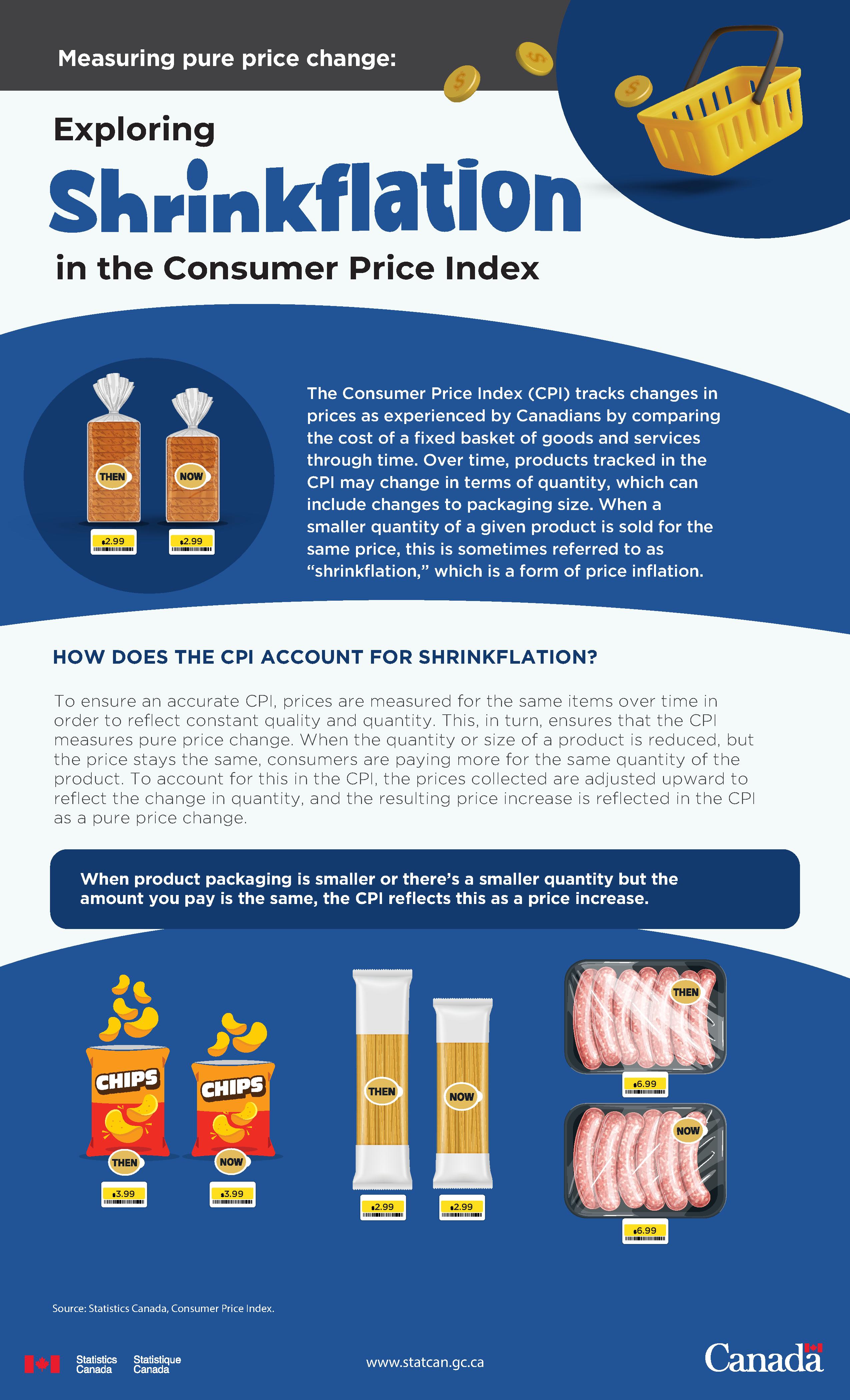
Description - Measuring pure price change: Exploring Shrinkflation in the Consumer Price Index
The Consumer Price Index (CPI) tracks changes in prices as experiences by Canadians by comparing the cost of a fixed basket of goods and services through time. Over time, products tracked in the CPI may change in terms of quantity, which can include changes to packaging size. When a smaller quantity of a given product is sold for the same price, this is sometimes referred to as “shrinkflation,” which is a form of price inflation.
How does the CPI account for shrinkflation?
To ensure an accurate CPI, prices are measured for the same items over time in order to reflect constant quality and quantity. This, in turn, ensures that the CPI measures pure price change. When the quantity or size of a product is reduced, but the price stays the same, consumers are paying more for the same quantity of the product. To account for this in the CPI, the prices collected are adjusted upward to reflect the change in quantity, and the resulting price increase is reflected in the CPI as a pure price change.
When product packaging is smaller or there’s a smaller quantity but the amount you pay is the same, the CPI reflects this as a price increase.
Source: Statistics Canada, Consumer Price Index.